Techno-Optimist #15
Starship flight #5 turns science fiction into reality, exoplanet updates, the Hubble Tension is confirmed again, a fruit fly brain is fully mapped, obesity declines...and a lot more!
Welcome to the fifteenth edition of Techno-Optimist, your go-to destination for all the latest updates and commentary on space, science, technology, medicine, energy, AI, and much more.
A warm welcome to my new readers—there’s plenty to talk about, so I hope you’re ready for some exciting and inspiring news! The future is finally beginning to look more like the future we’ve been imagining, so let’s dive in.
"Even in this day and age, what we just saw looked like magic." —Dan Huot (SpaceX commentator for Starship Flight #5)
“It is important in this often difficult and troubled world for there to be things that also inspire and make you feel great to be part of humanity.” —Elon Musk
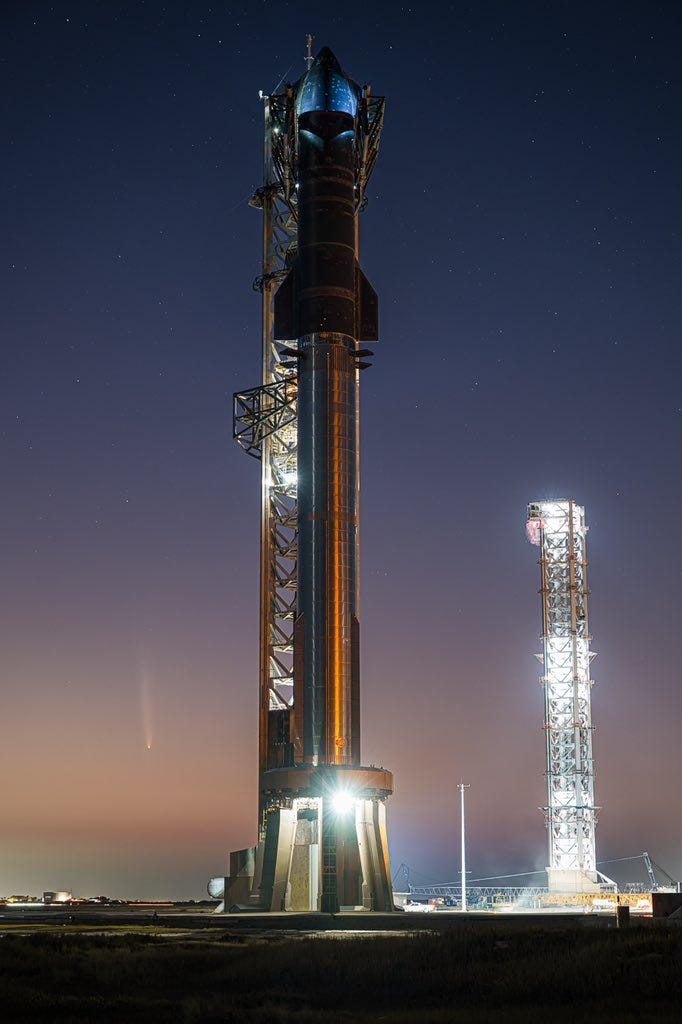
Starship flight #5 turns science fiction into reality. The fantastic fifth flight of Starship on October 13th was a roaring success. The world’s biggest rocket climbed into the sky, did a flawless hot staging separation, and carried onwards and upwards. The Super Heavy booster then returned to the ground, where a technological marvel occurred: it was caught by the launch tower (aka Mechazilla). Let me say that again a different way—a metal skyscraper falling from the edge of space slowed down and was caught by a giant pair of high-tech tweezers. The cheering from the control room at SpaceX sounded deafening, I don’t think they’ve even been that excited. I’ve watched the video clip of that catch probably a dozen times now, it does not get old! After a quick inspection it looks like the booster had “A few outer engine nozzles are warped from heating & some other minor issues,” but nothing major, which bodes well for rapid reuse.
The ship itself carried on to orbital height and speed, then dropped back through the atmosphere—live streamed via Starlink satellites all the way—before doing a perfect soft landing in the Indian Ocean. Then it blew up, which to be honest made the ending even better!
An excellent summary of what this all means was captured in The Free Press by Tim Urban, writing that “It’s hard to wrap your head around SpaceX’s mission. If they actually succeed in putting a single human on Mars, let alone their goal of a million people, it will be one of the major milestones in not just human history but life history—on par with the moment animals first began to walk on land.”
To fuel those dreams is going to need a lot of starships. So SpaceX has built a 1-million square foot Starfactory. This isn’t on the drawing board, it’s already there. The goal is “eventually producing 1,000 Ships a year.” To me, this is well on its way to a Star Trek level space port, and the future that it implies. Ad Astra!
You can watch the entire flight here.
Liftoff from another perspective
Tower view of Super Heavy booster catch
Soft landing of Starship in the Indian Ocean
How it started versus how it’s going
Exoplanets updates. The European Southern Observatory in Chile has found a planet orbiting Bernard’s star, at 5.95 light years the second closest system to our Sun [Sidebar: the triple star system of Alpha Centauri is closer]. The new exoplanet has less mass than Earth, and orbits Bernard’s star every 3.15 days. Because of this, its surface temperature will be around 125 °C (257 °F), outside the zone where liquid water might exist. I think we’re pretty thoroughly answering the question of whether or not planets are common in the universe. The real question now, is how many of them are actually habitable? I suspect not many. (ESO) (Corey S. Powell)
A little further away (100 light years), the JWST has confirmed the first steam world. GJ 9827 d is about twice the size of Earth and three times its mass. It’s atmosphere is “almost entirely composed of water vapor.” Because of its proximity to its host star (a K-type star), it’s too hot for life as we know it, hence it being a steam world. (Space.com)
Stepping out even farther, an exoplanet 635 light years away may be the first to have a moon confirmed to be in orbit around it. The Saturn sized gas giant WASP-49b has an odd cloud of sodium around it, inconsistent with the composition of both the planet and its star. It’s thought that the only way it could be produced is from intense volcanic activity on an orbiting moon—similar to Io around Jupiter, but even more extreme.

2024 Nobel Prizes. This year’s Nobel Prizes were announced earlier this month, let’s take a look. One thing that struck me was how much AI was implicated or enabled by some of the discoveries. Makes me wonder how long it’ll be before AI starts winning these solo. I won’t be going over the prizes for literature and peace. Those are important too of course, but they fall outside the scope of this newsletter, so I’ll leave you to read up on those yourselves if you’re interested.
Physics: John Hopfield and Geoffrey Hinton “for foundational discoveries and inventions that enable machine learning with artificial neural networks.”
Chemistry: David Baker, Demis Hassabis, and John Jumper “for protein structure prediction.” This is what enabled AlphaFold and its protein structure predicting brethren.
Physiology or Medicine: Victor Ambros and Gary Ruvkun “for the discovery of microRNA and its role in post-transciptional gene regulation.”
Economics: Daron Acemoglu, Simon Johnson, and James Robinson “for studies of how institutions are formed and affect prosperity.” The prize was awarded for providing better insights into the “causes of the wealth of nations” and how good or bad institutions can impact it. (The Nobel Prize)

Fusion energy updates. Zap Energy has just revealed Century, their new demo machine, along with a fresh infusion of $130 million to help push it forward. Built in less than a year, Century started tests this past summer, running 1,080 “Z pinches into a chamber lined with liquid metal.” This machine won’t be the one to achieve breakeven for Zap, but is instead “designed to start proving out the subsystems that will eventually be needed to go from scientific breakeven to engineering breakeven.”
Acceleron Fusion is a fairly new fusion company, founded just last year. They just raised $15 million to help them along their planned path to fusion energy: muon catalyzed fusion. Muons are the heavier cousins of electrons, with 207x greater mass. When used in a fusion reaction, they lower the energy barrier needed for fusion to occur, potentially allowing it to occur at much milder temperatures than other approaches (it’s not cold fusion though). The problems are twofold: one is that muons only exist for 2.2 microseconds before decaying. While it’s long enough to help around 100 fusion reactions to occur, that’s still not enough to generate net energy. The other issue is that “about 0.8% of the time, a muon gets stuck to…an alpha particle, and doesn’t participate in any more fusion reactions.” A small number, but enough to push commercial viability even further away. Acceleron hopes to raise temperatures and pressures to reduce this second problem, hopefully leading to more fusion reactions. (@Energy_Zap) (Tech Crunch) (Bob Mumgaard)
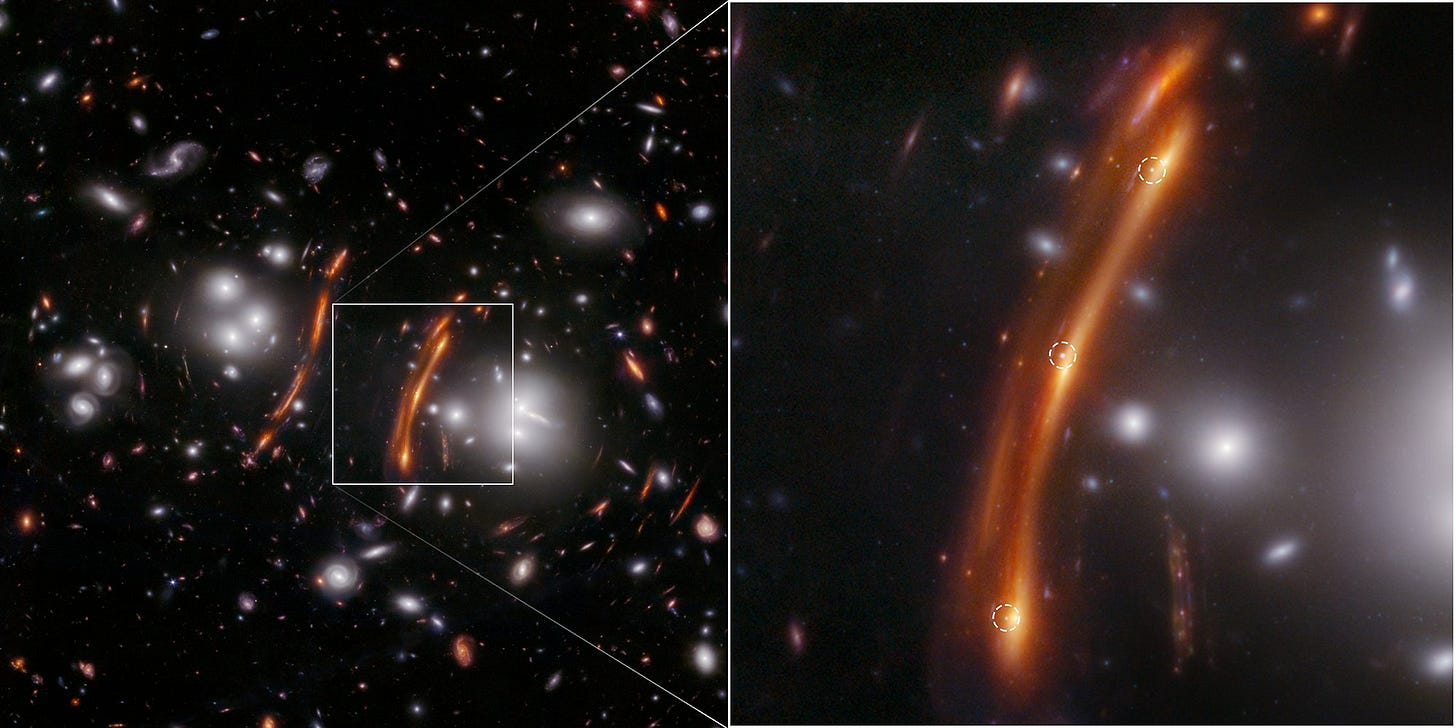
Hubble Tension confirmed again. An image taken by the JWST has revealed a distant, gravity lensed supernova named SN H0pe. In the picture above you can see that it’s light has been bent by an intervening galaxy cluster so that it shows up in three places. Why is this trifold image important? Each lensed version of the supernova shows it at a slightly different time—imagine three pictures of you, one pouring yourself a glass of water, the next drinking it, and the last one with you putting the empty glass down. This allows astronomers “to use the time delays, its distance, and the lensing properties to calculate a value for the Hubble constant: the rate at which the universe is expanding.”
The value matches others taken in the ‘local’ universe, and differs from those obtained from distant regions when the universe was young. This is the essence of what’s called the Hubble Tension—both values are correct according to every instrument and the respective measurements used. But according to our current theories of how the universe works, that’s impossible, and contradicts the Standard Model. Perhaps there’s more to reality than our current theories can explain. (NASA Blogs) (@NASAWebb) (Live Science)
Space
NASA’s Europa Clipper has launched! The spacecraft—the largest NASA has ever built for a planetary mission like this—will reach Jupiter’s moon Europa by 2030, where it will work to better understand the liquid water ocean there that lies beneath of ice. Making dozens of close passes, the probe will search “for chemicals on the surface, organic chemicals that are the precursors to life…looking for a habitable environment and evidence for the ingredients of life, not life itself." Searching for life will be left to a future mission capable of drilling or melting its way through the icy crust, but the Europa Clipper will help gather data to lay the groundwork for making it happen. (NASA) (Space.com) (Phys.org)

The Clipper wasn’t the only exciting mission to launch either, with the ESA’s Hera spacecraft taking off to study the impact (pun intended) made on the asteroid Dimorphos when NASA’s DART (Double Asteroid Redirection Test) whacked it back in 2022. Information gathered by Hera “will provide valuable data for future asteroid deflection missions and science to help humanity’s understanding of asteroid geophysics as well as solar system formation and evolutionary processes.” Basically, we’re avenging the dinosaurs. (ESA) (@SpaceX)
Volta Space Technologies is out of stealth mode. Their plan: creating nighttime power on the Moon by using lasers to beam solar power collected by satellites in orbit to rovers, and eventually human outposts. This will enable equipment to survive the lunar night, currently a serious and exploration limiting challenge. (Volta Technologies via Greg Autry)
That’s not all though, there’s another company just coming out of stealth called Aetherflux with plans to turn science fiction into reality by beaming solar power from space to Earth. Their goal is to become “a kind of Starlink for solar energy—a network of low-orbiting satellites with solar arrays that capture sunlight and beam it by infrared lasers to many ground receivers.” Early days yet, but the plan is to test beaming enough energy to power an average home by 2026. (Fast Company) (@AetherfluxUSA)
Private space company Vast has revealed its final design for Haven-1, and their plans for it to serve as the world’s first commercial space station. Hopefully launching later next year, it will have a far more open feel to it than the ISS, and will allow for scientific research (and tourism?) during month long missions. Looking forward to it! (@vast)
NASA has launched a $3 million Lunar Recycle Challenge to help deal with the problem of garbage on future missions to the Moon and Mars. While not a problem on the short “footprints and flags” Apollo missions, setting up long term bases will result in a lot of trash. So put your thinking caps on, and figure out how to take one astronaut’s trash, and transform it into another’s treasure. If you succeed there’s not only the money, but the knowledge that you’re helping humanity expand its presence across the Solar System. “Recycling where no one has recycled before.”
AI, Energy, Engineering, & Physics
Construction has resumed at what will be the world’s first 1 kilometer (0.62 mile) high building in Saudi Arabia. The JEC Tower is expected to be finished in 2028, and will be an impressive 1,007m (3,303 ft) high, dwarfing the world’s currently tallest building—the UAE’s Burj Khalifa, which only rises to a height of 828m (2,716 ft). Challenge: America should build the world’s first mile high tower. (New Atlas)
A mini AI update for you: Meta has released Movie Gen, which according to them is the “most advanced media foundation model to date.” It created high definition videos from text, but you can you also use it for video editing (e.g., “replace that coffee mug I’m holding with a flashlight”). OpenAI’s CEO Sam Altman made some pretty interesting announcements at the company’s 2024 development day on October 1st. Included is a goal of having “functional AI agents…promising to transform productivity by automating complex tasks.” Think of it as Jarvis lite. The company also announced what they call “vision fine-tuning” that will let developers teach GPT to recognize certain things, leading to more accurate assessment of image and videos. (Brett Adcock) (@IterIntellectus) (Ars Technica)
Last time I told you that Microsoft will be restarting the power plant at Three Mile Island, now Google and Amazon have jumped on the nuclear bandwagon too. Google signed an agreement to buy clean energy from “a series of small modular reactors (SMRs), to be developed by Kairos Power.” Kairos, by the way, is Greek for ‘the right or critical moment.’ Perfect.
Amazon’s announcement was that they signed three separate agreements: first with Energy Northwest to developed “four advanced SMRs” capable of generating 320MW, with an option to later increase output to 960MW. They also invested in X-energy for the development of new SMRs and the fuel to power them. Lastly, they signed with Dominion Energy to “explore the development of an SMR project near Dominion’s existing North Anna nuclear power station.” (Michael Terrell) (Amazon)
Researchers who clearly enjoyed comic books when they were kids have created a real version of Spider Man’s web slinging technology, where “a fluid material can shoot from a needle, immediately solidify as a string, and adhere to and lift objects.” The sticky threads are from silk worms, not spiders, but still awesome! (Phys.org)
China has a new policing robot prototype, and to be honest this one is starting to look like the real thing. It can move over rough terrain, and can even swim! It can take a beating from criminals (or students calling for freedom), knocking them down, and even shooting a net to catch them. It’s a brave new world. (Mario Nawfal)
Medicine
One of the many awful things about cancer is that one often needs to be hooked up to an IV in order to receive chemotherapy. That may have just changed with “an embarrassingly simple solution” allowing almost any drug to be effective as a pill. It involved attaching a “small molecular tag” to a drug that changes its solubility, allowing it to work in pill form. It’s a breakthrough that could make the unpleasant experience of treating cancer a little more comfortable. I’m sure millions will agree that this can’t come soon enough. (New Atlas)
For some time it’s been known that electricity heals wounds faster. The problem is always finding a practical way to apply it. Researchers in China may have found a solution with their ‘smart stitches’ that generate a small electric charge when stretched. Tests on rats showed that 10 days after use, “the electrical sutures had closed the rats’ wounds by 96.5%, while the control sutures had only closed by 60.4% in the same time.” Human trials will hopefully start soon. (New Atlas)
Severe calorie restriction (eating significantly less) is known to increase lifespan in mammals, but it was always assumed that the cause was positive metabolic changes. Turns out that’s not why at all. While “the metabolic changes are important…they don’t lead to lifespan extension.” Instead, it boosts immune system functioning and resilience to stress. While reducing calories by 40% had the biggest effect for longevity, “intermittent fasting and less severe calorie restriction also increased average lifespan.” (Nature via Samuel Hume)
For the first time in over 40 years, the US obesity rate in adults fell. That’s right, in 2023 the number of really fat people in America actually went down. Use of drugs like Ozempic is thought to be the cause, which means that this is all thanks to technology. Absolutely huge news (or less huge news, depending on how you look at it). (John Burn-Murdoch) (Rob Wiblin)
Riding the success of drugs like Ozempic, other diet drugs are being developed. One that caught my eye is called LaKe, and “mimics the metabolic effects of strenuous exercise and fasting,” but without any physical activity or changes in diet. It’s not small effect either, taking a dose gives “similar benefits to running 10 kilometers on an empty stomach.” Seriously, sign me up! Speaking of food, a carotenoid found in foods like carrots and tomatoes, has been found to extend lifespan and reduce the effects of Alzheimer’s type plaques in C. elegans, commonly used as model organisms in labs. (Neuroscience News) (SciTechDaily)
After years of frustratingly unsuccessful attempts, the FDA has approved a T-cell therapy for the treatment of a solid tumor. It’s a rare type of sarcoma, but this opens the door wide for using T-cells in other varieties of solid tumors, instead of just blood cancers where they’ve previously been successful. (Nature)
Scientists have found that using near infrared light at a wavelength of 810nm improved “performance in functional tests involving balance and cognitive function” after a mild traumatic brain injury. It seems to help calm down a set of secondary inflammatory processes that occur after the trauma, which often make the long term effects of the injury worse. The study used animal models and delivered the light in two minute intervals for three days after the injury. (Medical Xpress)
The science fiction vision of nanobots patrolling the bloodstream removing blockages of plaque in arteries is getting closer to reality. Researchers in Michigan have created a nanotechnology that targets inflamed areas in arteries, and “triggers the immune system to help break down and remove the plaque buildup.” It’s worked well in pigs, and the hope is that it can soon help humans too. (Interesting Engineering)
Weird & Wonderful
A human-AI team has mapped the entirety of a connectome in a fruit fly’s brain. The connectome is exactly what it sounds like, all the neural connections in the brain—how it’s wired. 140,000 neurons and 50 million synapses, it took the combined efforts of AI and humans from 127 institutions around the world to pull it off. I wonder how long it will be before this is done with the human brain? (David Rowland) (Brian Roemmele)
Scientists have discovered that comb jellies can actually merge into a single individual when two of them are injured—apparently without any tissue rejection. It suggests that the systems of comb jellies “do not distinguish between self and others.” (New Scientist)
2 billion year old rocks in South Africa have yielded up an incredible discovery, living microorganisms within “sealed fractures” in the rock. That life has been able to persist for such enormous lengths of time in such an environment raises the question of what we might find beneath the surface of Mars. Personally, I think it’s virtually certain there was life on Mars in the past—the interplanetary exchange of rocks makes it inevitable. Could some of it still survive? Let’s send people to find out asap! (Interesting Engineering)
Tauros, a breed of wild cattle “designed to possess the appearance of aurochs,” will soon be released into the Scottish Highlands. There’s already hundreds of them wandering around Europe, the idea being to introduce an animal close to the aurochs back into what was once their natural environment, refilling ecological niches. In other extinction news, a notorious “modern mass extinction” in the Ecuadorian cloud forests in the 1980s didn’t actually happen. 90 species of plants thought to be unique to a hilltop in that country were wiped out when the forest there was cleared for agriculture. But thankfully, all but one has been confirmed to be growing elsewhere. Many are still very endangered, but it’s encouraging to know that life is often tougher than we give it credit for. (IFL Science) (Phys.org)
Photos & Videos
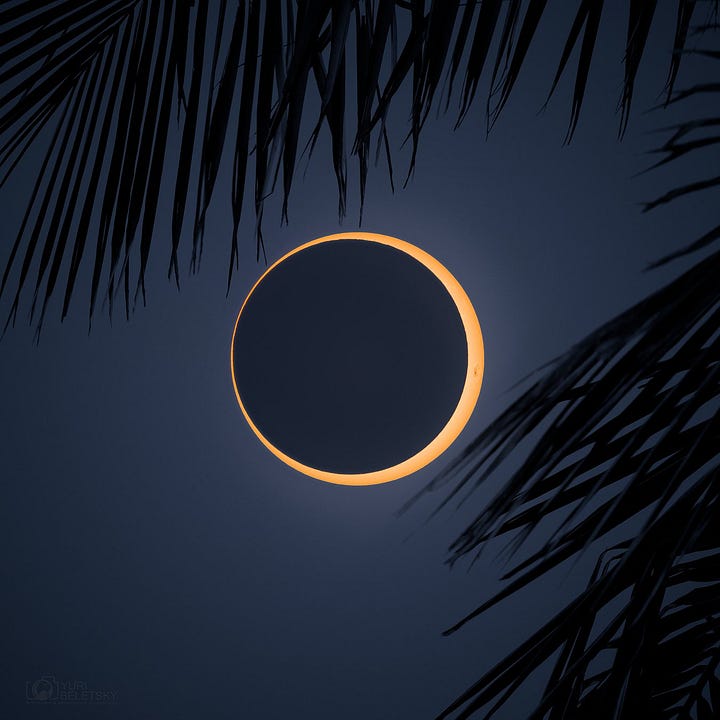
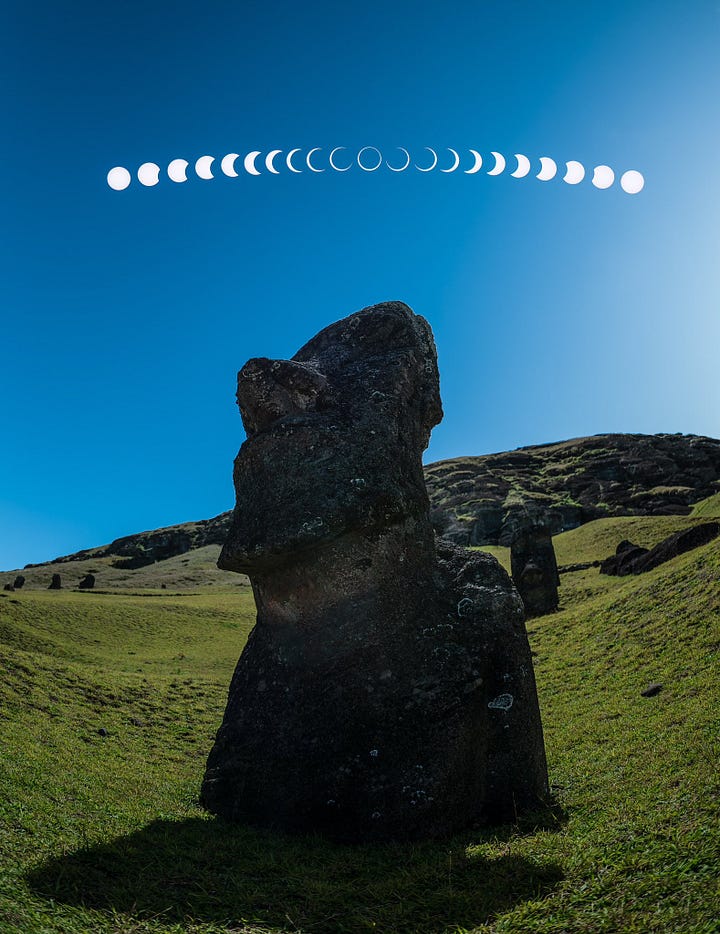
An annular solar eclipse—where only a ring of the Sun remains visible—occurred on October 2nd. One of the best places to see it was actually Easter Island, leading to these incredible photographs. (Yuri Beletsky) (Josh Dury)
While on Easter Island photographing the eclipse, Yuri Beletsky also got this beautiful shot of a Moai statue against a background of the night sky, with both the Magellanic Clouds visible. (Yuri Beletsky)
ULA’s new Vulcan Centaur rocket launched an important test flight on October 4th at sunrise. I could go on about how it’s not reusable, but wow just take a look at this instead. (John Kraus)
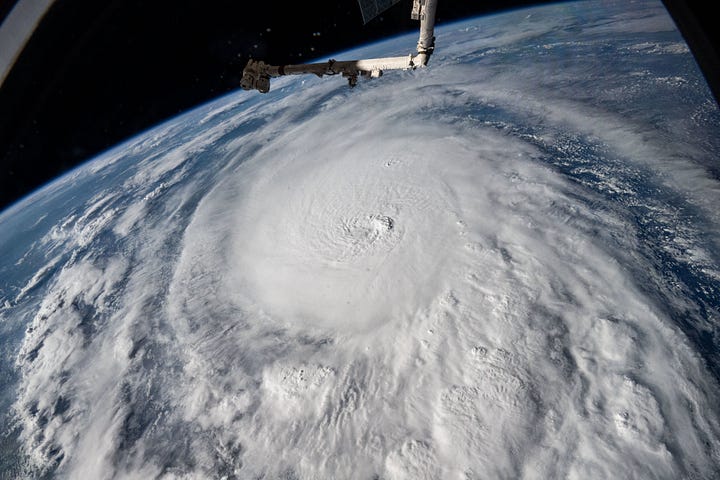

Hurricane Milton viewed from space when it was still a Category 5. You can see a video of it from the ISS here. (International Space Station)
I hope you’ve all been able to see some auroras recently. But if not, here’s a recent view of one from the International Space Station. (Matthew Dominick)
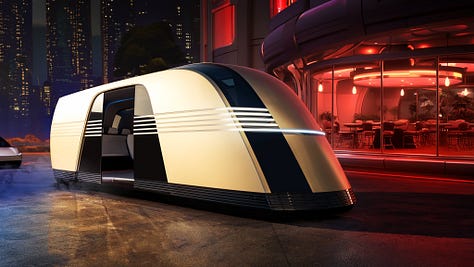

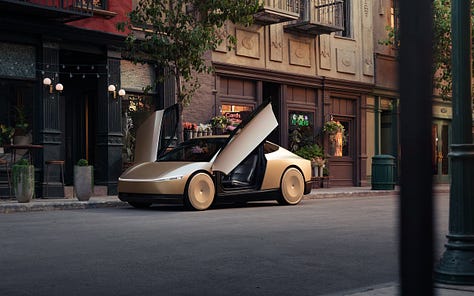
Tesla just had a epic product launch called ‘We Robot’ where they unveiled a robotaxi, and robovan. I have to say, the art deco style is refreshing. There were also dancing Optimus robots. You can watch the whole event here. (@Sawyer Merritt) (Elon Musk) (Tesla)
It’s true none of this is available to buy or use right now. But it will be. I think if there’s anything recent history has taught us, it’s to never bet against Elon Musk. Or more positively, though sometimes his timelines are a bit aspirational, he always succeeds eventually.
Recommendations & Reviews
A new book caught my eye thing time, and I thought I’d pass it on to all of you. Prehistoric World is all about prehistoric mammals from the Mesozoic through the Cenozoic [Sidebar: the Mesozoic was the time of dinosaurs; the Cenozoic is everything since then]. It covers over 1,200 “incredible mammal discoveries,” and gives readers the chance to learn about how mammals rose to dominate the Earth once the dinosaurs were gone. It’s marketed to children officially, but is really targeted to readers of all ages. (Phys.org)
That’s it for now, thank you all for reading and I hope you enjoyed it. The next edition of Techno-Optimist that will be hitting your inbox a fortnight from now; and until then—keep your eyes on the horizon.
-Owen




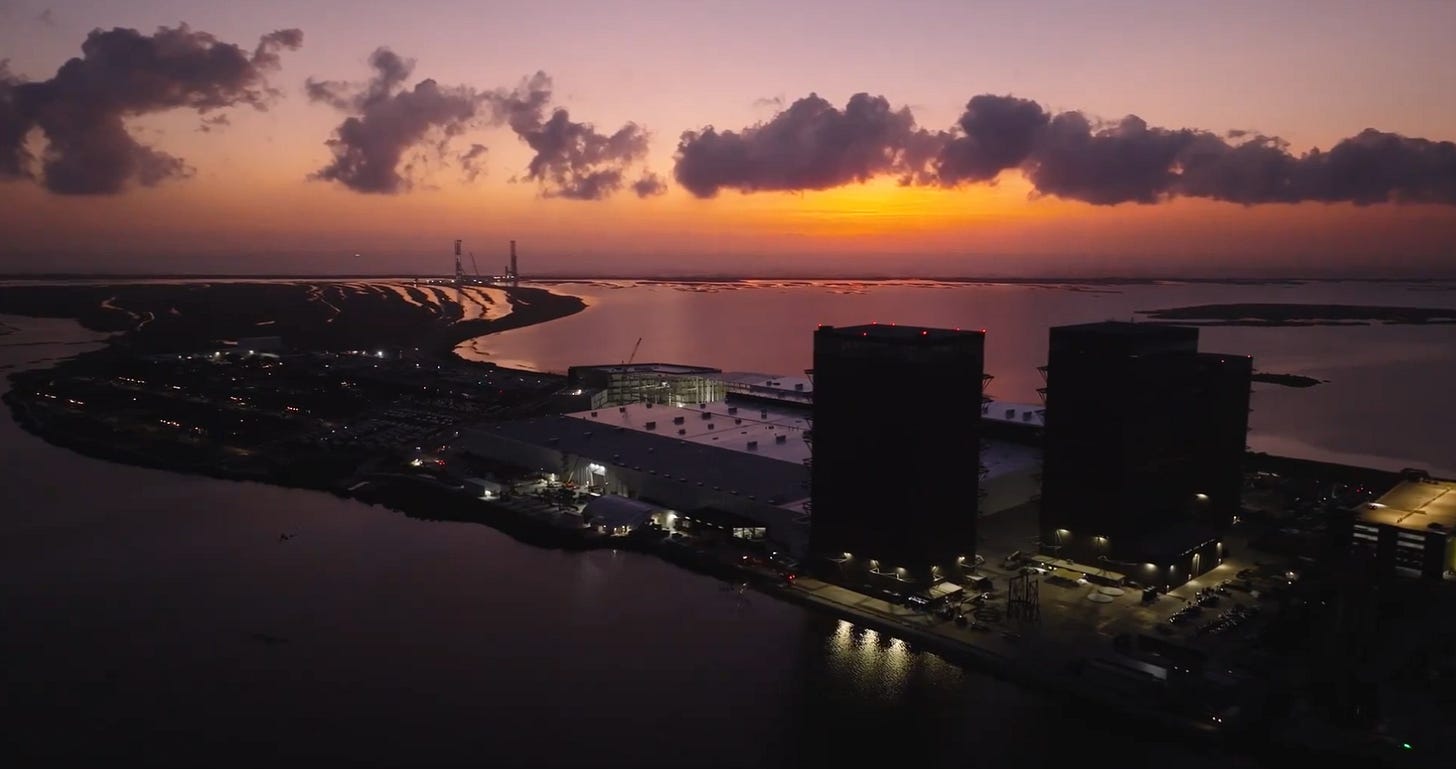
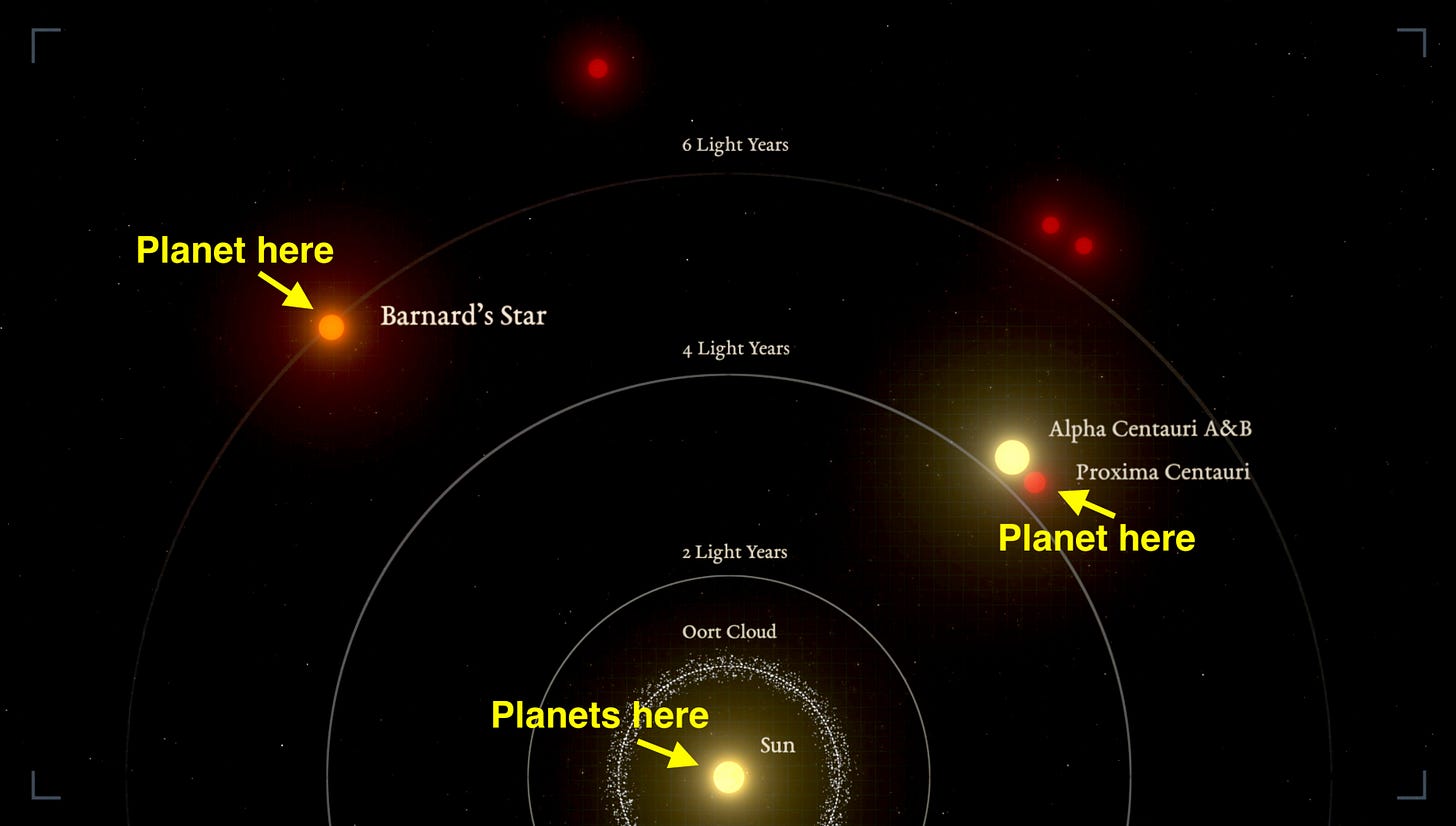
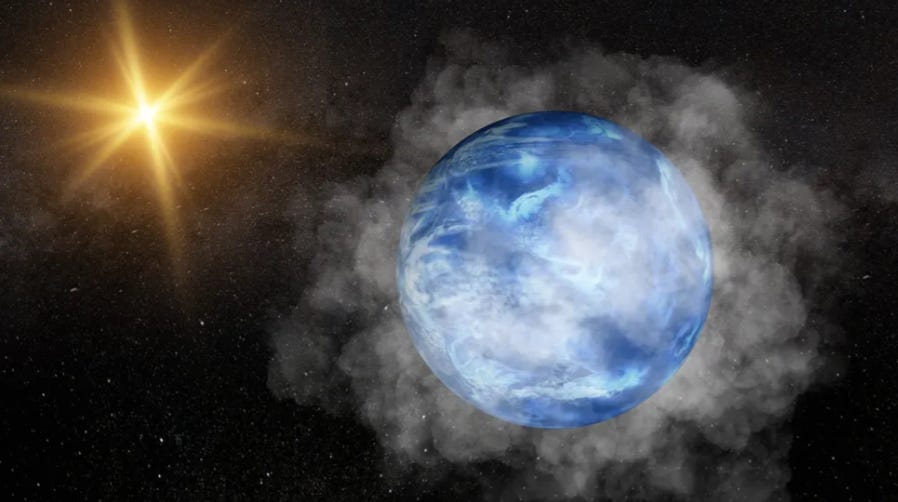

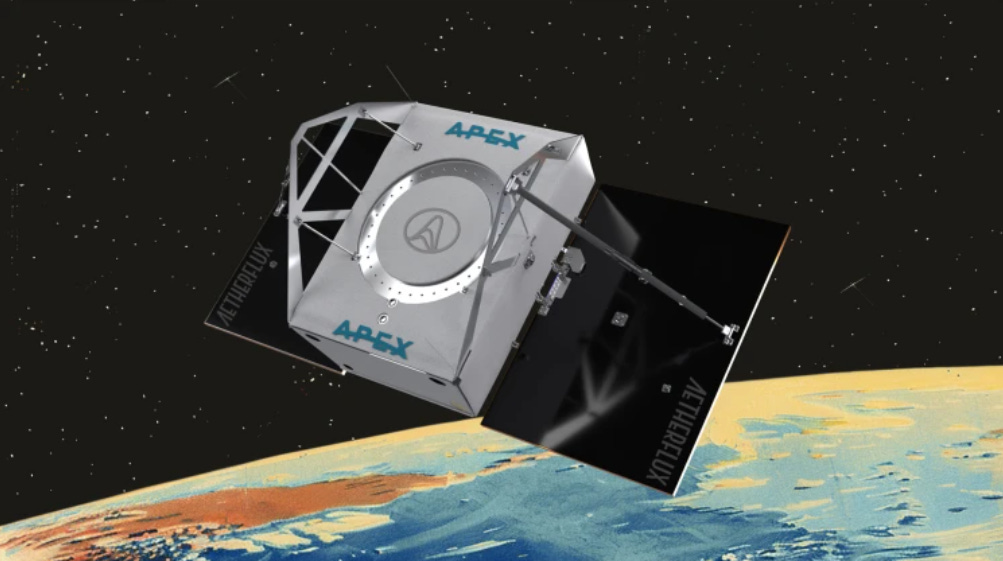

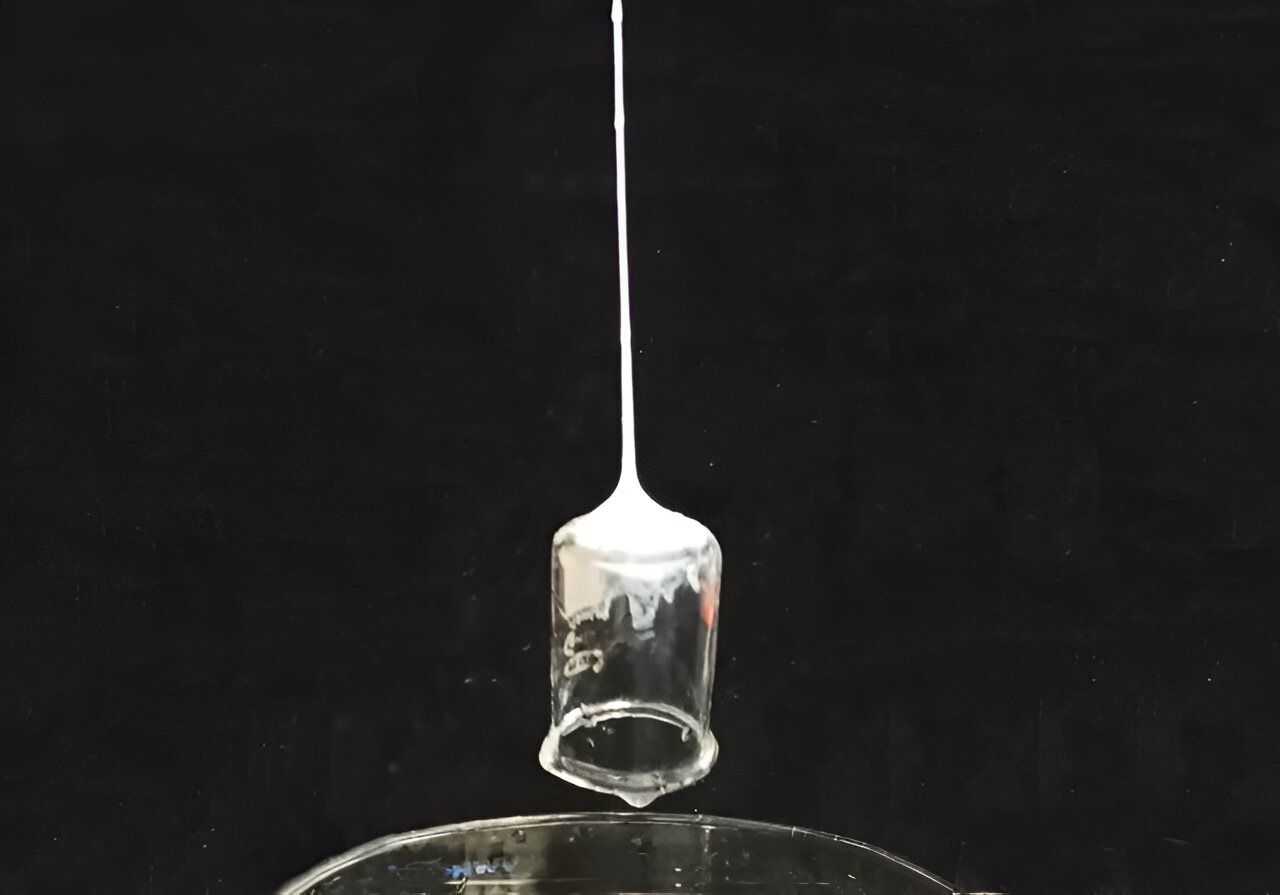
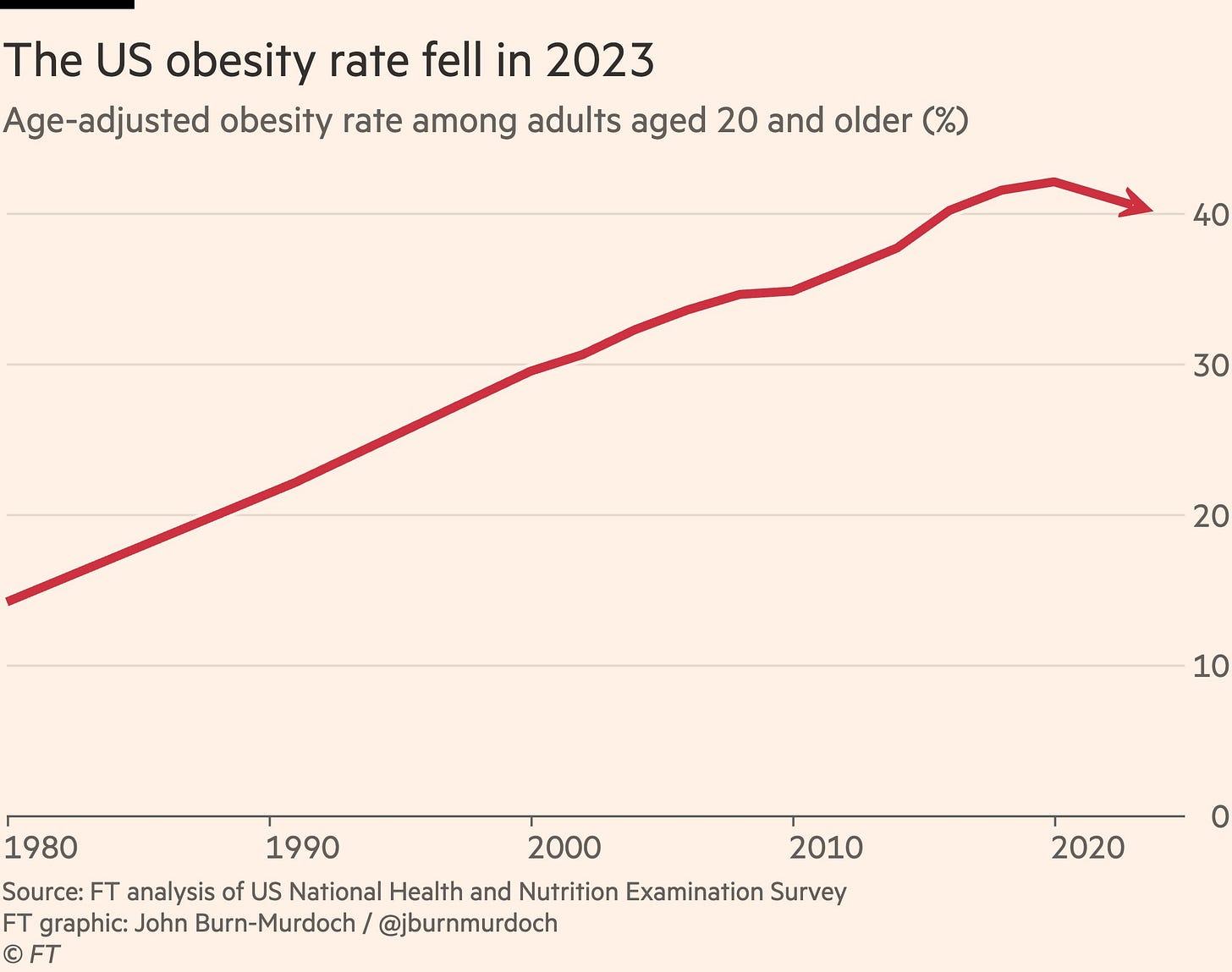
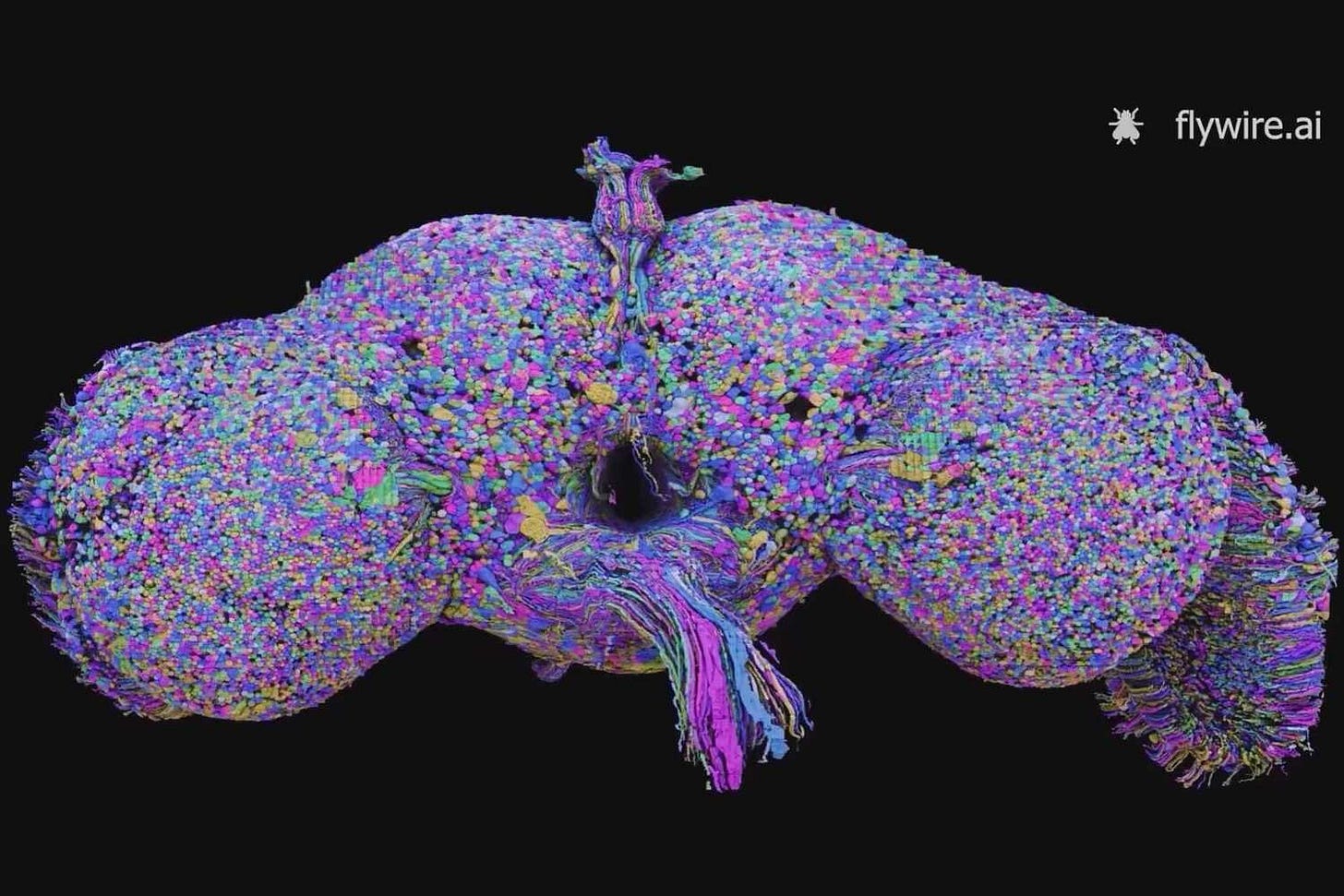
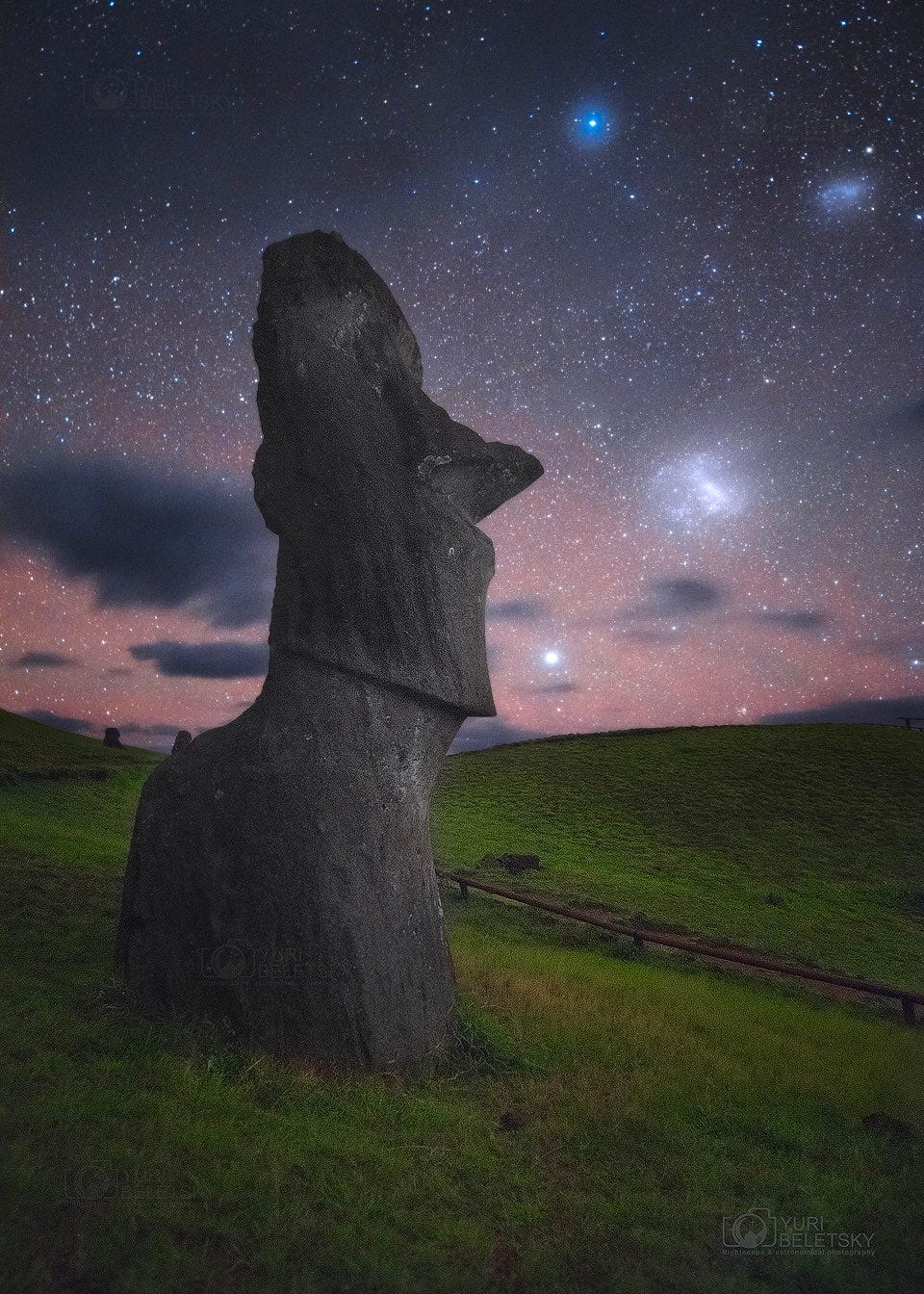
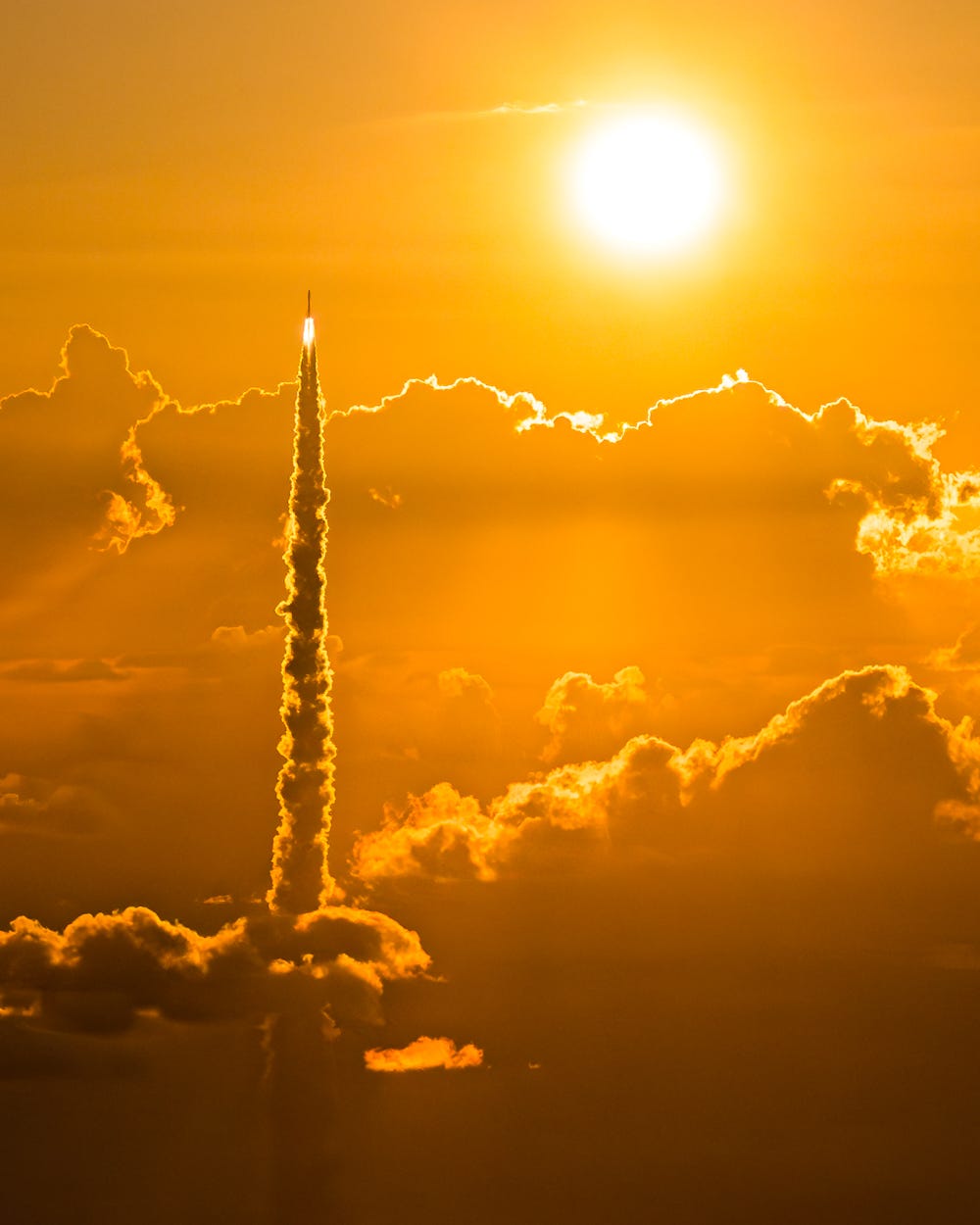

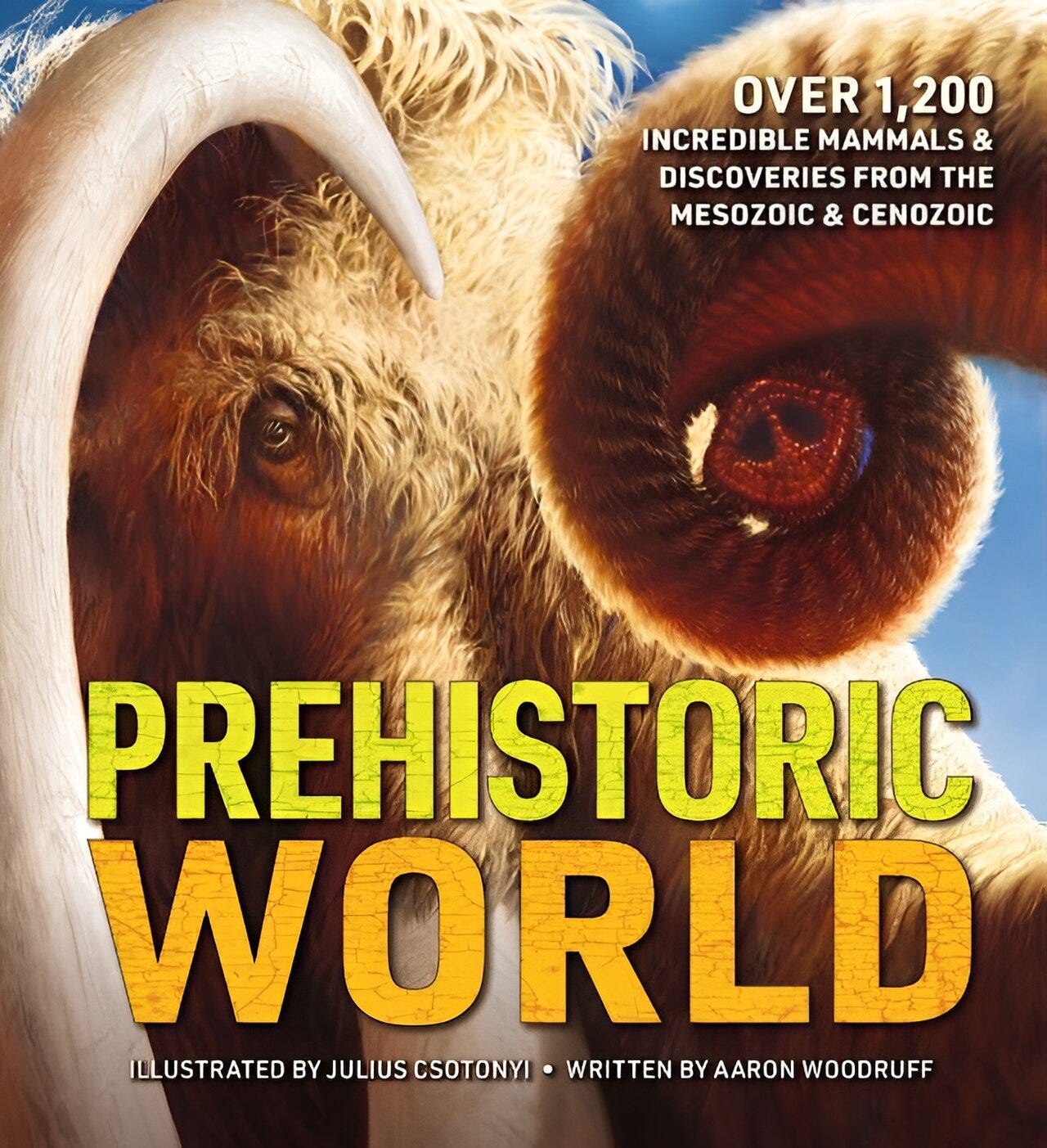
I ate 500 calories for 5 days a week and ate more on weekends for 10 years while my kids were young. I felt amazing. Had plenty of energy and never got sick. However, the last 2 years started to wear on me. Kept having to lie down and put my feet up so my heart would calm and ended up destroying all my eggs (I was done having kids, anyway) and going into menopause at age 33. So, yes, cutting calories in half is good. You just have to know when to stop. It's tricky. The thing is, once you can do that for 1 week, you are never ever hungry.
Also, the rest of this newsletter was amazing. It always amazes me.
“To fuel those dreams is going to need a lot of starships. So SpaceX has built a 1-million square foot Starfactory. This isn’t on the drawing board, it’s already there. The goal is eventually producing 1,000 Ships a year. To me, this is well on its way to a Star Trek level space port, and the future that it implies.” (Owen Lewis)
The only thing we’re missing is a warp drive. Maybe we should put Elon Musk in charge of inventing one. If anyone can do it, he can.